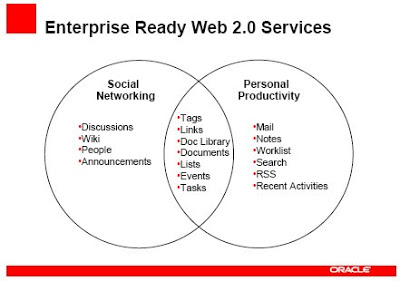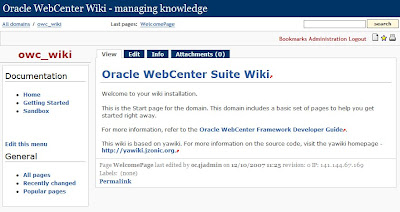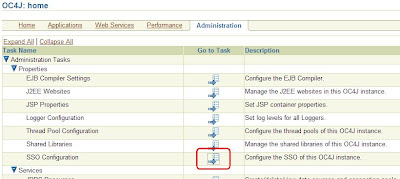An Ode to SOA - The Story of Eric the Architect
I recently discovered the following manuscript in my attic. It was an emotional moment, being my chronicle of the friendship I shared with a pioneer of the information age. Ultimately rejected and disowned by is peers, Eric was a champion of all that is good in IT. I share this now, in the hope that future generations may see the error of their ways...
I'd like to tell you the story of my friend Eric. Known amongst his closest friends (like Greg) as "Eric the Architect", a veteran of the Enterprisey Wars.
He's had an amazing career. If you are of a certain age like Eric, you have grown up with the explosion of information technology in the enterprise. You may even share his experience of the great putsch to create a new, better world in which order and control reign over chaos and individualism.
I remember Eric telling me of his early days in the cabala, just starting out as a novice. Duely consecrated, Eric got a job in the dungeons of a well established banking institution. A silver-tongued pin-stripe jockey from Manhattan had convinced the MD to jump aboard the new business revolution. Delivering your quarterly report was no longer going to be dependent upon legions of handle-cranking, visor-tipping clerks. Blechley Park had marked the path. The transistor was upon us! Eric was trained in the art of COBOL. As an accolite, he got to experience the power passed down from the denizons on high. Early assignments introduced him to the adrenaline rush that comes from raising sheilded wing over the hoards of minions in whose hands the destiny of the Comapany had been entrusted. "Show us the light, Master!" they called out. And Eric replied: 004900 MOVE STACK-FRAME (S390) TO CURRENT-FRAME
But little did the heathens respect the God-given mission of Eric. Newly promoted to Sturmbanfurher, Eric struggled with disention and mutiny. Did they not understand that by submission to the higher powers that be, all could enjoy the magnificence of the Corporation? How dare they challenge Eric's mandate to engineer a perfect mechanism through mystical manipulation of the mainframe? To think the proletariat would rise up and demand their rights to having their own Personal Computer on their desk!
And there lie the seeds of the Great Corporate War. Oh, the devastation! Corporate plans laid to waste, lives ruined, as the forces of good were trapped in pitted battle with the revolutionaries and their new fangled "personal" computing machines. Some said it was the war to end all wars, but devilish forces were afoot.
Recollections of meeting Eric after the war are not pleasant. Seeing him slumped in a wicker chair with but a thin blanket draping his legs while we swilled gluwein in the crisp alpine air was more than a man can bear. The scars of battle were deep, but I was surprised by the tenacity of Eric's spirit. It seemed that defeat had done nothing but steel him for battles ahead.
In restrospect, it is hard to comprehend the circumstances by which some hyphenated upstart in a minor European duchy could re-ignite the forces of war. But set the world ablaze he did, and by the devious means of dragging the perfect and sacrosanct SGML into vulgar gutterism of the bastard child, HTML. Eric found that the comfortable detante negotiated and sanctioned by the power of the Ring of Tokens had been laid assunder.
Once more, the civilized world was thrown into the evil clutches of revisionism and subversion. Gnostic apostates proclaimed the false god of layered architecture. N-tiers were shed in remorse. Uberlieutenant Eric, sufficiently recovered from his wounds, slew into battle with a fierce war-cry that was heard to the ends of the earth. "Eeeaaaaaiiii!" he screamed. Many rallied to his call, and became the vanguard of EAI corps. You may have seen a photograph of them valiantly trying to raise the flag under an undying onslaught. Island by island, Eric fought the demonic forces back into a corner. "There is, was, and forever will be only one way to honour the gods of business!" he lambasted.
But the forces of darkness were not so easily asuaged. Foresaking conventional means, they resorted to guerilla tactics. Casting a web to ensnare the world. Your workmates, family, friends, even the rental scum down your street are not spared from the tenticles of the terrorist's poke.
I remember Eric telling me how it was like trying to sculpt jello. Think you have one spurt under control, and you are faced with another outbreak on your flank. Eric's armoury was deficient. A new weapon was required.
"So ... what did you do?" I pressed.
"So .. ahhhh .." he replied. I'd be kind to say it was heart-felt. As I sat there listening to him prattle on about how his compadres were testing their so-called "SOA bomb", version 2.0, under ultra-secret development, I knew I was listening to the meandering ramblings of a Hero of the Revolution whose time had passed.
"There, there.." I said.
"You must continue the good work, my Son!" His spindrift fingers clawed at my new Armani shirt. A moment's annoyance passed in my eyes, as I looked into the well-pools of emotion that seemd to kindle his only spark of life. Depressing, yes. But what can you really say to someone looking over the horizon at the Gucci-robed sickler? Not exactly an opportune moment to discuss how he may have been misguided.
"Don't worry, Father. The world is in safe hands." I murmered. "Global Megolith 2.0 has sued for peace. The ruby rises high in the sky in the constellation of Venus, just as the prophet foretold. Bands of insurgents are joining forces around the globe as we speak. You have not faught in vain. We understand now that just as there is an enemy within, there is also a friend. We are learning to make love (it's complicated), not war. We don't need to fight anymore!"
"Your work is done..." I sanctimoniously purred as I lay my hand upon his forehead and gently pressed his eyelids down (it doesn't work like in the movies, btw).
Fact, or science fiction? SOA world domination is still within our grasp...
read more and comment..
WebCenter - First Thoughts. WATCH/HOLD
I just posted about installing Oracle WebCenter Wiki. So what do I think?
The current release of Oracle WebCenter is 10.1.3, and presents the first attempt at providing a Web 2.0 platform incorporating a (development) framework, integrated Services, and mobility ("WebCenter Anywhere"). The roadmap for 11g emphasises features focused on improving a developer’s productivity.
Having spent a bit of time going beyond the powerpoints and whitepapers, I guess I would emphasise the "..first attempt.." in the statement above. There are concerns I have about the product mission, the egregious approach to Open Source project integration, and a work-in-progress information architecture. While I'll be closely following Oracle's progress with WebCenter, my personal view is that a cautious "watch/hold" position is prudent.
WebCenter as an out-of-the-box Web 2.0 Experience?
The first reactions to WebCenter typically concerned it's positioning with respect to Oracle Portal. After many repetitions, I think Oracle have managed to get the message through that there's a distinct value prop for Portal (classic, monolithic Enterprise Portal) and WebCenter (platform and services for a loosly-coupled "Web 2.0" user experience).
However when it comes to WebCenter itself, there's still tension in the 10.1.3 version between two very different audiences/usages it targets.
Firstly, there's the developer audience. There's great emphasis by Oracle on WebCenter as a development framework in the whitepapers and podcasts (e.g. a great interview between Justin and Vince Casarez on Oracle Fusion Middleware Radio).
Oracle WebCenter injects new capabilities into the standard JavaServer Faces development environment to allow developers to create context-rich applications that satisfy these needs.
The catch is that at present developers are well served with JDeveloper and associated developer downloads. WebCenter's attraction seems mainly as a licence bundle of pre-existing Oracle products like Secure Enterprise Search, Content Database and the Mobility Server. There's nothing very Web 2.0 about all that, except that taken altogether, developers certainly could build Web 2.0-style.
In a wild daydream, you may have hoped WebCenter would be to Java what Rails is to Ruby. An opinionated, highly productive, pre-integrated framework. For now I'm afraid you will be disappointed.
The second audience I refer to is the IT Operations/Business audience. These are the people who don't expect to be coding, but want a quick Web 2.0 jumpstart for their enterprise. They don't have the time or inclination to take on the job of investigating, integrating and maintaining a hodge-podge of all the possible open source options. Basically they just want to install it, and are happy to pay for the convenience.
In other words, hoping that WebCenter is to Web 2.0 out-of-the-box experience what Astaro is to security appliances. Again, I'm afraid you would be disappointed for now. The 11g roadmap does include an out-of-the-box application to enable self-service community creation and management.
I guess my problem at this point is that I'm not convinced that Oracle have really decided where to take this. The development focus is clear, but it is not clear at all how much will end up being "only available WebCenter" - one could easily imagine WebCenter ending up as just a licensing artifact, with all the framework technology also available separately. And on the other hand, I have real concerns over the commitment to WebCenter becoming a killer "Web 2.0 appliance".
Personally I think Oracle may have misjudged the market on this. Of the 20 or so people I have had casual WebCenter discussion with, all bar two were just after a blog/wiki/discussions platform to install. That's hardly representative, but I have a feeling Oracle would be more succesful in the market if they just focused on delivering the "appliance", with all the supporting framework rolled into the JDeveloper/OracleAS/ADF base.
As it seems to be going, I wouldn't mind betting the primary audience for WebCenter will turn out to be Oracle's own Fusion Applications development team, with most customers just adopting it as a result of their Applications investment.
Open Source Closure?
I am actually much more concerned about the approach Oracle have taken to integrate 3rd party open source components into the WebCenter Services layer.
Take the "standards-based, open-source wiki server that is included with Oracle WebCenter" for example (words from the 10.1.3.2 Technical whitepaper).
Oracle chose yawiki/jzwiki for their wiki component, and it certainly was (at least partially) an open source project. But in WebCenter, we seem to be dealing with a forked and closed source version. My concerns:
- Oracle is not shipping source code for the Java classes in owc_wiki.ear
- While some classes are available from the yawiki project, Oracle have made enhancements (I suspect the main cases being the controller to incorporate AdfAuthentiation; JSR-168 and WSRP portlet support). These are not provided as open source.
- yawiki includes some packages (like jZonic-web.jar which contains the main controller framework) which are purportedly open source, but for which there seems to be no source code available on the Internet [Postscript: I take this back having since discovered that the source of jzonic-web.jar is from the femto module in the jZonic framework]
- The version of the wiki in WebCenter has been forked from yawiki. There is no procedure provided to merge the yawiki main line. WebCenter wiki users seem to be completely dependent on Oracle to merge enhancements in yawiki into WebCenter updates. Or not.
- There are already enhancements in yawiki that are not available in WebCenter (e.g. TagClouds, RSS feeds of page changes). And no procedure for adopting these enhancements.
- The WebCenter wiki seems to only be supporting the file-based HSQLDB (see backup/restore procedures for example), despite the fact that yawiki has or promised relational database support - even Oracle!
- Despite the customisation that Oracle have done to yawiki, there's currently no integration the content database component in WebCenter for content storage or tagging.
So I guess you could say I was underwhelmed. From a practical perspective of a wiki implementer, there seems to be little upside in chosing to go with WebCenter wiki over its true open source father, yawiki, or others such as xwiki. But some big downsides to consider.
I'd much prefer see Oracle take a very different tack with the integration of "open source" components into WebCenter.
- Ship mainline version of the open source project (don't close the source)
- Provide Oracle enhancements (for security integration etc) as patches to the open source project. Do not combine a version of the open source project with Oracle-written customisations, and ship as "closed source".
- Where possible, contribute the "WebCenter" patch to the open source project so that it can be maintained in sync with that project.
- Ideally, reach as many projects in the same category as possible (i.e. support a few different wikis in WebCenter). A great way to do this would be to encourage the community to do it themselves. Yawiki is OK, but there are certainly some great alternatives out there.
Wherefore art thou, my blog?
The WebCenter whitepapers repeatedly mention phrases like "key technologies such as wiki, RSS, and blogs". The Datasheet still specifically claims WebCenter has a "wiki/blog server for collaborative authoring of documents and sharing of ideas".
Wiki - got, despite concerns already discussed. RSS - some, but not in all places that it counts (like the wiki!). But blog? It's MIA!
I have a sneaking suspicion that this is because yawiki used to have a blog capability, but the project team wanted to rethink the approach and dropped it. It is now in the planned feature list;-)
OK, these things happen. But in the WebCenter 11g roadmap, Oracle seem to have defined blogs out of existence - at least in terms of their relevance for the "Enterprise"! Was this to gloss over the missing blog feature in yawiki? Or is there a real belief that blogging is not part of the Enterprise 2.0 model? I'm not sure which view concerns me most!

It is even more curious when you consider (as Bex Huff recently reminded us) Oracle Universal Content Management has Blogs, Wikis, and RSS Feeds. And the roadmap for WebCenter 11g has UCM replacing Content DB.
Conclusions?
I've presented some pretty frank views on WebCenter after my "first look". Take my comments with a grain of salt though. I have not investigated the framework developer experience in detail yet. But I would say that Oracle has a lot riding on the 11g release. I hope they make it a more "opinionated" and cohesive release and get to knock down some of my concerns.
read more and comment..
WebCenter Wiki - Up and Running with OC4J 10.1.3
I finally had a chance to sit down with Oracle WebCenter recently, primarily to give the wiki functionality a test drive. I wanted to test in a virgin OC4J 10.1.3.3 container (as opposed to the Preconfigured Standalone OC4J) just to make it interesting and see all the moving parts. As far as I could discover, there's not a great deal of information available on the topic. In this post I'm going to chronical the specific installation procedure I used to get WebCenter Wiki running under OCJ4 10.1.3.3.
This is the end result we're after..
Documentation and Downloads
The documentation for WebCenter Wiki is a little obscure when it comes to installing in a "plain" OC4J container. It turns out to be pretty straight-forward, but just as mc said in the forums recently: "Oracle documentation just make it look difficult"!I refered to the following materials for the install:
- The installation documentation for Oracle WebCenter Wiki is actually found in the Oracle WebCenter Framework Developer's Guide.
- Splice in the instructions from 3.3 Enabling Oracle SOA Suite or a Standalone OC4J for WebCenter Applications
- Which points to Portlet Development Resources and Downloads for the additional portlet and ADF configuration required to prepare the OC4J container for WebCenter.
- Finally, the Java SSO configuration (which is supported by Oracle Wiki using AdfAuthentication)
It can all get a bit confusing, but the following diagram illustrates the installation dependencies

There are four downloads required, all readily available from OTN:
- OC4J 10.1.3.3 container
- Oracle WebCenter Additional Services CD
- Oracle Portlet Container and PDK-Java 10.1.3.2
- Oracle ADF Installer
Installation Procedure
I'm going to document the install steps here in the order I actually executed them. Variations are possible. I'm installing this under Windows XP, but the same applies on other platforms (just switch \ to / and use the appropriate command shell syntax).
1. Get the OC4J container running
To be precise, I am using "Oracle Containers for J2EE (OC4J) 10g Release 3 (10.1.3.3)". I won't cover in detail here. Basically you need to unpack and startup. The only thing you may need to configure are the port settings to avoid conflicts with other services.
2. Install PDK-Java
Details for installing the Oracle Portlet Development Kit are in index.html from the Oracle Portlet Container and PDK-Java 10.1.3.2 download. Assuming we've exploded the download into "G:\pdksoftware", the following performs the installation into the 10.1.3.3 home:
set ORACLE_HOME=G:\MyCache\oc4j_extended_101330
set J2EE_HOME=%ORACLE_HOME%\j2ee\home
set JAVA_HOME=C:\bin\jdk1.6.0_03
set PDKPATH=G:\pdksoftware
%JAVA_HOME%\bin\java -jar -classpath %ORACLE_HOME%\lib\xmlparserv2.jar -jar %PDKPATH%\pdk\jpdk\v2\pdkinstaller.jar %J2EE_HOME%
3. Install the Portal Container
From the same kit, we install the Portlet container
set ORACLE_HOME=G:\MyCache\oc4j_extended_101330
set J2EE_HOME=%ORACLE_HOME%\j2ee\home
set JAVA_HOME=C:\bin\jdk1.6.0_03
set PDKPATH=G:\pdksoftware
%JAVA_HOME%\bin\java -jar %PDKPATH%\pdk\portlet-container\portlet-server-install.jar %J2EE_HOME%

4. Install and Test the Sample Portlets
Using Enterprise Manager (http://localhost:8888/em or similar), go to the "Applications" tab and deploy the %PDKPATH%\pdk\jpdk\v2\jpdk.ear.
Once done, you should be able to successfully access the sample providers at http://localhost:8888/jpdk/providers/sample and get a page like the one shown on the right.
5. Install ADF
Explode the Oracle ADF Installer, which uses a silent "runInstaller" to install.
First, you'll need to update the adfinstaller.properties file, paying particular attention to OracleHome, DesHome and type values. This is from my install:
# The absolute path to the directory containing the ADF jars to be installed.
# This is the location of the directory where you unzipped the adfinsatller.zip
OracleHome = G:\\Sources\\incoming\\www.oracle.com\\OracleAS\\ADF\\adfinstaller
# Home directory for the destination application server,
# where the ADF Jars need to be installed
DesHome = G:\\MyCache\\oc4j_extended_101330
# Specify the platform for the Application Server where the ADF libraries need
# to be installed. This has to be one of the following choices.
# OC4J/AS/TOMCAT/JBOSS/WEBLOGIC
type = OC4J
And then run:
java -jar runinstaller.jar adfinstaller.properties
Restart OC4J at this point.
BUT, if you were like me, my container failed to start at this point with Error initializing server: Shared library "adf.oracle.domain" could not be found..
Annoying, but no panic. Edit ORACLE_HOME/j2ee/home/config/server.xml, re-order the shared library entry for "adf.oracle.domain" (I moved it to just after the "oracle.persistence" shared library) and try to startup again.
NB: after getting to this point, I find my OC4J does not completely shutdown after issuing a shutdown request via RMI %ORACLE_HOME%\bin\oc4j -shutdown -port %RMIPORT% -password %adminpwd%. Leaving that problem for another day.. :sigh:
6. Install Oracle Wiki (finally)
Using Enterprise Manager (http://localhost:8888/em or similar), deploy the owc_wiki.ear from the Oracle WebCenter Additional Services CD
7. Configuring Security
If you try and hit the wiki now (http://localhost:8888/owc_wiki) you will probably get a 500 error because security is not started or configured.
For this test, I'm just going to use the out-of-the-box Java SSO File-Based Security Provider.
In EM, startup the Java SSO application (look under the application group "Middleware Services > Other Services"). If you try and access the wiki now, you should see a login form but get an error when you submit because we need to generate the Symmetric Key. Every time I go to do this, following the Java SSO documentation, I struggle to find the right link in EM.
To be clear, in 10.1.3 look for "SSO Configuration" on the Administration tab of the OC4J container (below). Go to the page, make sure "Generate new symmetric key" is checked, select your key type, and click "Apply". You will be prompted to restart OC4J.

Browse to the wiki again and we have .. Success!

8. Adding users
Remember we're using the JAZN XML security provider rather than OID or other directory. Andreas had a nice post recently on how to Add a user to the JavaSSO, and that's what I need to do to add a personal account for myself..
set ORACLE_HOME=G:\MyCache\oc4j_extended_101330
set J2EE_HOME=%ORACLE_HOME%\j2ee\home
set JAVA_HOME=C:\bin\jdk1.6.0_03
%JAVA_HOME%\bin\java -jar %J2EE_HOME%\jazn.jar -adduser jazn.com paul password1
%JAVA_HOME%\bin\java -jar %J2EE_HOME%\jazn.jar -grantrole users jazn.com paul
JAZN is a bit dumb compared to using a real directory, so you need to restart OC4J again to pick up the new credentials.
And there we go. Oracle Wiki up and running in OC4J. Just 8 "simple" steps;-)
read more and comment..
The White Stripes - Icky Thump
| I heard the title track from The White Stripes' Icky Thump some time back. Think it might have been on BBC World Service's White Label. Finally picked up the album last weekend. It's quirky playful, in a Sonic Youth kind of way, but perhaps with a more solid blues rock/bluegrass sensibility. It gets stuck in your head. Love it. |
read more and comment..